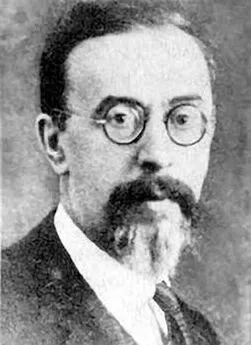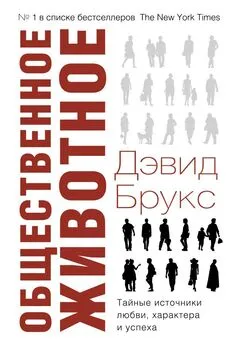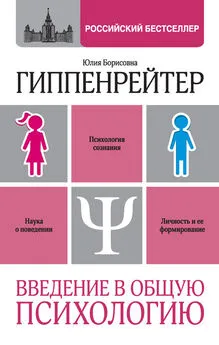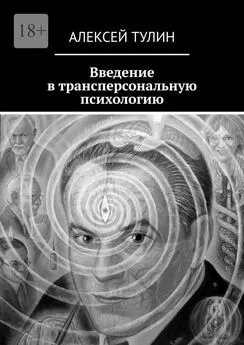Эллиот Аронсон - Общественное животное. Введение в социальную психологию
- Название:Общественное животное. Введение в социальную психологию
- Автор:
- Жанр:
- Издательство:неизвестно
- Год:неизвестен
- ISBN:нет данных
- Рейтинг:
- Избранное:Добавить в избранное
-
Отзывы:
-
Ваша оценка:
Эллиот Аронсон - Общественное животное. Введение в социальную психологию краткое содержание
Общественное животное. Введение в социальную психологию - читать онлайн бесплатно полную версию (весь текст целиком)
Интервал:
Закладка:
17. Milgram, S. (1961). Nationality and conformity. Scientific American, 205(5), 45-51. Frager, R. (1970). Conformity and anticonformity in Japan. Journal of Personality and Social Psychology, 15,203-210.
18. Maccoby, E., amp; Jacklin, C. (1974). The psychology of sex differences. 268- 272). Stanford, CA: Stanford University Press. Copper, H. (1979). Statistically combin-446 ing independent studies: A meta-analysis of sex differences in conformity research. Journal of Personality and Social Psychology, 37, 131-146.
19. Eagly, A., amp; Carii, L. (1981). Sex of researchers and sex-typed communications as determinants of sex differences in influenceability: A meta-analysis of social influence studies. Psychological Bulletin, 90, 1-20. Javomisky, G. (1979). Task content and sex differences in conformity. Journal of Social Psychology, 108, 213-220. Feldman-Summers, S., Montana, D., Kaspinyk, D., amp; Wagner, B. (1980). Influence attempts when competing views are gender-related: Sex as credibility. Psychology of Women Quarterly, 5,311-320.
20. Schneider, F. (1970). Conforming behavior of black and white children. Journal of Personality and Social Psychology, 16, 466-471.
21. Allport, G. (1954). The nature of prejudice (pp. 13-14). Cambridge, MA: Addison-Wesley.
22. Dittes, J., amp; Kelley, H. (1956). Effects of different conditions of acceptance upon conformity to group norms. Journal of Abnormal and Social Psychology, 53, 100-107.
23. Bushman, B.J. (1988). The effects of apparel on compliance: A field experiment with a female authority figure. Personality and Social Psychology Bulletin, 14, 459-467.
24. Festinger, L. (1954). Atheory of social comparison processes. Human Relations, 7, 117-140.
25. Mullen, В., Cooper, С., amp; Driskell, J.E. (1990). Jaywalking as a function of model behavior. Personality and Social Psychology Bulletin, 16 (2), 320-330.
26. Aronson, E., amp; O'Leary, M. (1982-83). The relative effectiveness of models and prompts on energy conservation: A field experiment in a shower room. Journal of Environmental Systems, 12, 219-224.
27. Cialdini, R.B., Reno, R.R., amp; Kallgren, C.A. (1990). Afocus theory of normative conduct: Recycling the concept of norms to reduce littering in public places. Journal of Personality and Social Psychology, 58, 1015-1029.
28. Ibid.
29. Schachter, S., amp; Singer, J. (1962). Cognitive, social, and physiological determinants of emotional state. Psychological Review, 69, 379-399.
30. James, W. (1890). Principles of psychology. New York: Smith.
31. Haney, C. (1984). Examining death qualification: Further analysis of the process effect. Law and Human Behavior, 8, 133-151.
32. Kelman, H. (1961). Processes of opinion change. Public Opinion Quarterly, 25, 57-78.
33. Kiesler, С., Zanna, M., amp; De Salvo, J. (1966). Deviation and conformity: Opinion change as a function of commitment, attraction, and presence of a deviate. Journal of Personality and Social Psychology, 3, 458-467.
34. Vogler, R., Weissbach, Т., Compton, J., amp; Martin, G. (1977). Integrated behavior change techniques for problem drinkers in the community. Journal of Consulting and Clinical Psychology, 45, 267-279. Kuetner, С., Lichtenstein, E., andMees, H. (1968). Modification of smoking behavior: A review. Psychological Bulletin, 70, 520-533.
35. Milgram, S. (1963). Behavioral study of obedience. Journal of Abnormal and Social Psychology, 67, 371-378. Milgram, S. (1965). Some conditions of obedience and disobedience to authority. Human Relations, 18, 57-76. Milgram, S. (1974). Obedience to authority. New York: Harper amp; Row.
36. Elms, A.C., amp; Milgram, S. (1966). Personality characteristics associated with obedience and defiance toward authoritative command. Journal of Experimental Research in Personality, 1, 282-289.
37. Kilham, W., amp; Mann, L. (1974). Level of destructive obedience as a function of transmitter and executant roles in the Milgram obedience paradigm. Journal of Personality and Social Psychology, 29, 696-702. Shanab, M., amp; Yahya, K. (1977). Abehavio-ral study of obedience in children. Journal of Personality and Social Psychology, 35, 530-536. Miranda, KB., Caballero, R.B., Gome?., M.G., amp;Zamorano, M.M. (1981). Obedience to authority. Psiqui^: Revista de Psiquiatria, Psicologiay Psicosomatica, 12, 212- 221. Mantell, D. (1971). The potential forviolence in Germany. Journal of Social Issues, 27, 101-112.
38. Milgram, S. (1974). Obedience to authority. New York: Harper amp; Row. Sheridan, C., amp; King, R. (1972, August). Obedience to authority with an authentic victim. Paper presented at the convention of the American Psychological Association.
39. Milgram, S. (1965). Liberating effects of group pressure. Journal of Personality and Social Psychology, 1, 127-134.
40. Milgram, S. (1965), Some conditions of obedience and disobedience to authority. Human Relations, 18, 57-76.
41. Milgram, S. (1965). Liberating effects of group pressure. Journal of Personality and Social Psychology, 127-134.
42. Rosenthal, A.M. (1964), Thirty-eight witnesses. New York: McGraw-Hill.
43. Korte, C., amp; Kerr, N. (1975). Response to altruistic opportunities in urban and nonurban settings. Journal of Social Psychology, 95, 183-184. Rushton, J.P. (1978). Urban density and altruism: Helping strangers in a Canadian city, suburb, and small town. Psychological Reports, 43, 987-990.
44. Darley, J., Latane, B. (1968). Bystander intervention in emergencies: Diffusion of responsibility. Journal of Personality and Social Psychology, 8, 377-383. Latane, В., amp; Darley, J. (1968). Group inhibition of bystander intervention in emergencies. Journal of Personality and Social Psychology, 10, 215-221. Latane, В., amp; Rodin, J. (1969). A lady in distress: Inhibiting effects of friends and strangers on bystander intervention. Journal of Experimental Social Psychology, 5,189-202.
45. Latane, В., amp; Nida, S. (1981). Ten years of research on group size and helping. Psychological Bulletin, 89,308-324.
46. Latane amp; Rodin, Lady in distress.
47. Darley amp; Latane, Bystander intervention.
48. Piliavin, 1., Rodin, J., amp; Piliavin, J. (1969). Good samaritanism: An underground phenomen? Journal of Personality and Social Psychology, 13, 289-299.
49. Bickman, L. (1971). The effect of another bystander's ability to help on bystander intervention in an emergency. Journal of Experimental Social Psychology, 7, 367-379. Bickman, L. (1972). Social influence and diffusion of responsibility in an emergency. Journal of Experimental Psychology, 8, 438-445.
50. Piliavin, J., amp; Piliavin, E. (1972). The effect of blood on reactions to a victim. Journal of Personality and Social Psychology, 23, 353-361.
51. Darley, J., amp; Batson, D. (1973). ‹From Jerusalem to Jericho›: A study of situational and dispositional variables in helping behavior. Journal of Personality and Social Psychology, 27,100-108.
52. dark III, R., amp; Word, L. (1972). Why don't bystander help? Because of ambiguity? Journal of Personality and Social Psychology, 24, 392-400. Solomon, L., Solomon, ff., amp; Stone, R. (1978). Helping as a function of number of bystanders and ambiguity of emergency. Personality and Social Psychology Bulletin, 4, 318-321.
53. Baron, R.A. (1970). Magnitude of model's apparent pain and ability to aid the model as determinants of observer reaction time. Psychonomic Science, 21, 196-197.
54. Suedfeld, P., Bochner, S., amp; Wnek, D. (1972). Helper-sufferer similarity and a specific request for help: Bystander intervention during a peace demonstration. Journal of Applied Social Psychology, 2,17-23.
1. АВС to air major nuclear war film. (1983, September). Report from Ground Zero, J(l), 1-2.
2. Schofield, J. W., amp; Pavelchak, M.A. (1989). Fallout from ‹The Day After›: The impact of a TV film on attitudes related to nuclear war. Journal of Applied Social Psychology, 19,433-448.
3. Newsweek, June 2, 1974, p. 79. O'Connor, J.J. (1974, March 10). They sell all kinds of drugs on television. The New York Times, p. D15.
4. Roberts, C. (1993). Special Report, National Public Radio, Morning Edition, September 3, 1993.
5. Mark Levy, цит. по: Time, October 1, 1979, p. 83.
6. Mann, P., amp; Iscoe, 1. (1971). Mass behavior and community organization: Reflections on a peaceful demonstration. American Psychologist, 26, 108-113,
7. St. Petersburg (Florida) Times, October 21, 1982. The (Nashville) Tennes-seean, October 31, 1982.
8. Newsbank, October 1982, Vol. 19, p. 1.
9. Phillips,D.P., amp; Carstensen.L.L. (1986). Clustering of teenage suicides after television news stories about suicide. New England Journal of Medicine, 315, 685-689.
10. Phillips, D.P. (1979). Suicide, motor vehicle fatalities, and the mass media: Evidence toward a theory of suggestion. American Journal of Sociology, 84, 1150-1174.
11. McGinness, J. (1970). The selling of the president: 1968 (p. 160). New York: Pocket Books.
12. Lyle, J., amp; Hoffman, ff. (1971). Explorations in patterns of television viewing by preschool-age children. In J.P. Murray, E.A.Robinson, amp; G.A.Comstock (Eds.). Television and social behavior (Vol. 4, pp. 257-344). Rockville, MD: National Institutes of Health.
13. Lyle, J., amp; Hoffman, H. (1971). Children's use of television and other media. In J.P. Murray, E.A. Robinson, and G.M. Comstock (Eds.), Television and social behavior (Vol. 4, pp. 129-256). Rockville, MD: National Institutes of Health.
14. Bern, D. (1970). Beliefs, attitudes, and human affairs. Belmont, CA: Brooks/ Cole.
15. Zajonc, R. (1968). The attidudinal effects of mere exposure. Journal of Personality and Social Psychology, Monograph Supplement, 9, 1-27.
16. Crush, J., McKeough, К., amp;Ahlering, R. (1978). Extrapolating laboratory exposure research to actual political elections. Journal of Personality and Social Psychology, 36, 257-270.
17. Crush, J.E. (1980). Impact of candidate expenditures, regionality, and prior outcomes on the 1976 presidential primaries. Journal of Personality and Social Psychology, 38,337-347.
18. White, J.E. (1988, November 14). Bush's most valuable player. Time, pp. 20-21.
19. Rosenthal, A. (1988, October 24). Foes accuse Bush campaign of inflaming racial tension. The New York Times, pp. Al, B5. Pandora's box (1988, October). The New Republic, pp. 4, 45.
20. Tolchin, M. (1988, October 12). Study says 53.000 get prison furloughs in '87, and few did harm. The New York Times, p. A23.
21. Pratkanis, A.R., amp; Aronson, E. (1992). The age of propaganda: The everyday use and abuse of persuasion. New York: W.H. Freeman.
22. Pratkanis, A.R. (1993). Propaganda and persuasion in the 1992 U.S. presidential election: What are the implications for a democracy? Current World Leaders, 36, 341-361.
23. Zimbardo, P., Ebbesen, E., amp; Maslach, C. (1977). Influencing attitudes and changing behavior (2nd ed.). Reading, MA: Addison-Wesley.
24. Petty, R.E., amp; Cacioppo, J.T. (1986). The elaboration likelihood model of persuasion. In L. Berkowitz (Ed.), Advances in Experimental Social Psychology (pp. 123- 205). Hillside, NJ: Eribaum.
25. Aristotle (1954). Rhetoric. In W. Roberts (Trans.), Aristotle, rhetoric and poetics (p. 25). New York: Modern Library. Рус. пер. - ‹Риторика Аристотеля›. Пер. И. Платоновой. СПб., 1894. Балашов и К°.
26. Hovland, С., amp; Weiss, W. (1951). The influence of source credibility on communication effectiveness. Public Opinion Quarterly, 15, 635-650.
Читать дальшеИнтервал:
Закладка:







